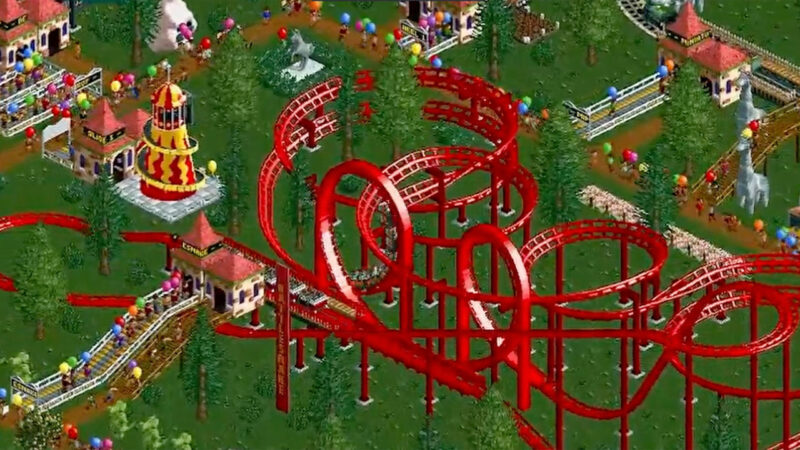Playing Tomb Raider I-III Remastered is like putting on those shoes you keep for special occasions or when you need to look your best.
Those shoes look good on, but they’re also a bit uncomfortable. Still, you’ll overlook the discomfort as they remind you of happy moments like weddings, baptisms, or graduation ceremonies.
They may also remind you of painful moments from your past. Aching feet trapped inside during a funeral or the blisters that erupted when you had to run for the bus after your last fluffed job interview.
These shoes are the Tomb Raider I-III Remastered of your footwear collection, and it’s time to take them out for a stroll to get to know them all over again.
Table of Contents
The Croft Collection
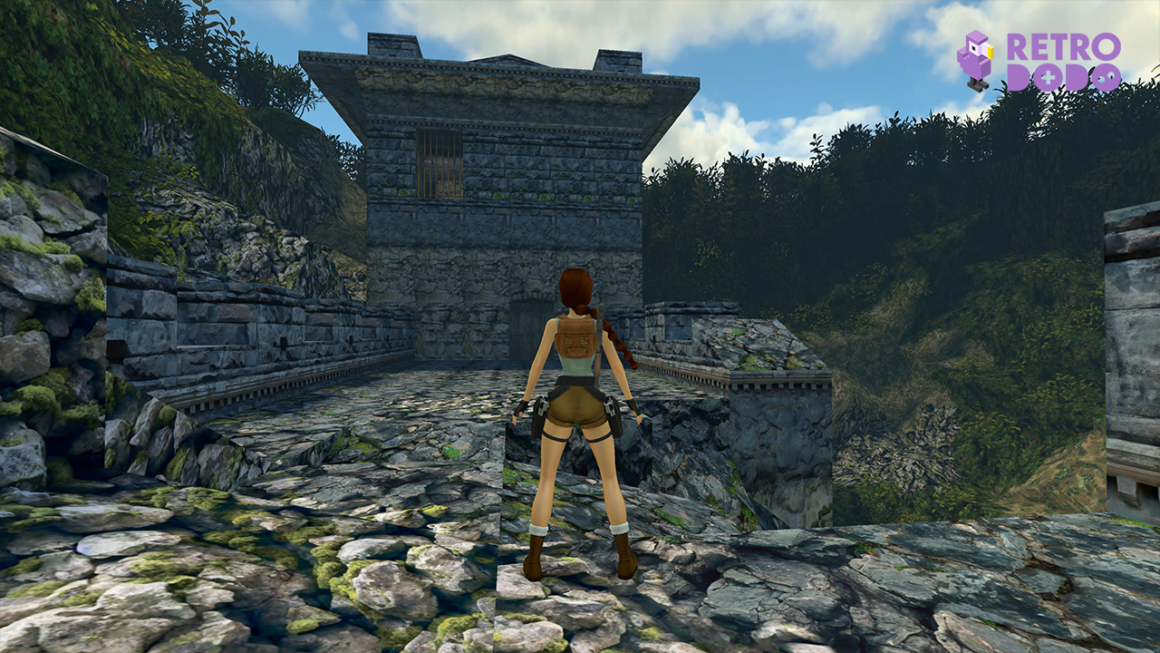
This new remaster of Lara Croft’s first three adventures is exactly what you’d remember if you clambered around as the titular Tomb Raider in the mid to late nineties.
Developer Aspyr has preserved these globe-trotting romps in their entirety and has even packed in the, previously PC-exclusive, expansions for each of the three titles to complete the package.
There’s a wealth of content included here. From Lara’s original trek into the mountains of Peru in Tomb Raider, to her James Bond-esque speedboat shenanigans in Venice in its sequel, all the way to infiltrating Area 51 in the closing part of the trilogy.
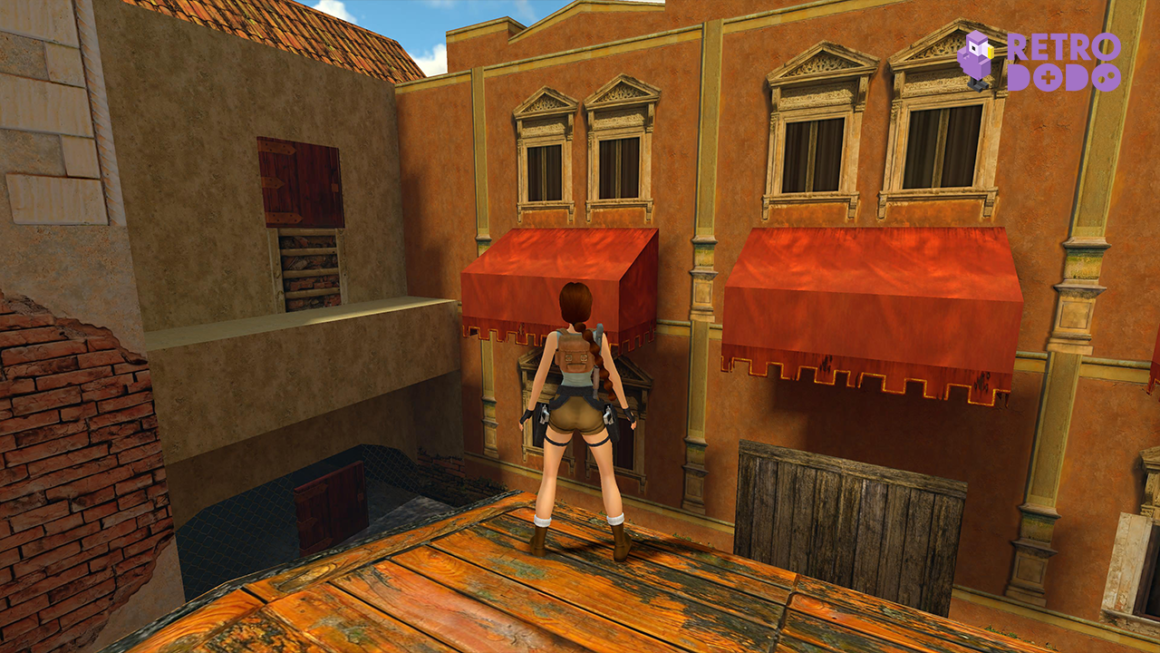
Each game retains the same level of layouts and geometry from those original releases. Nothing is cut here and that includes some troublesome portrayals of indigenous cultures that Aspyr rightly addresses with a racial and ethnic content warning upon boot-up.
If you’re revisiting the trilogy but, like me, spent hundreds of hours playing these games in their youth, the level layouts and the acrobatics you need to traverse them remain unchanged.
Of the three titles on offer, Tomb Raider II remains the most successful in terms of storytelling, effortlessly capturing the feeling of adventure akin to classic Indiana Jones without over-doing the spectacle or the silliness.
Lara Remastered
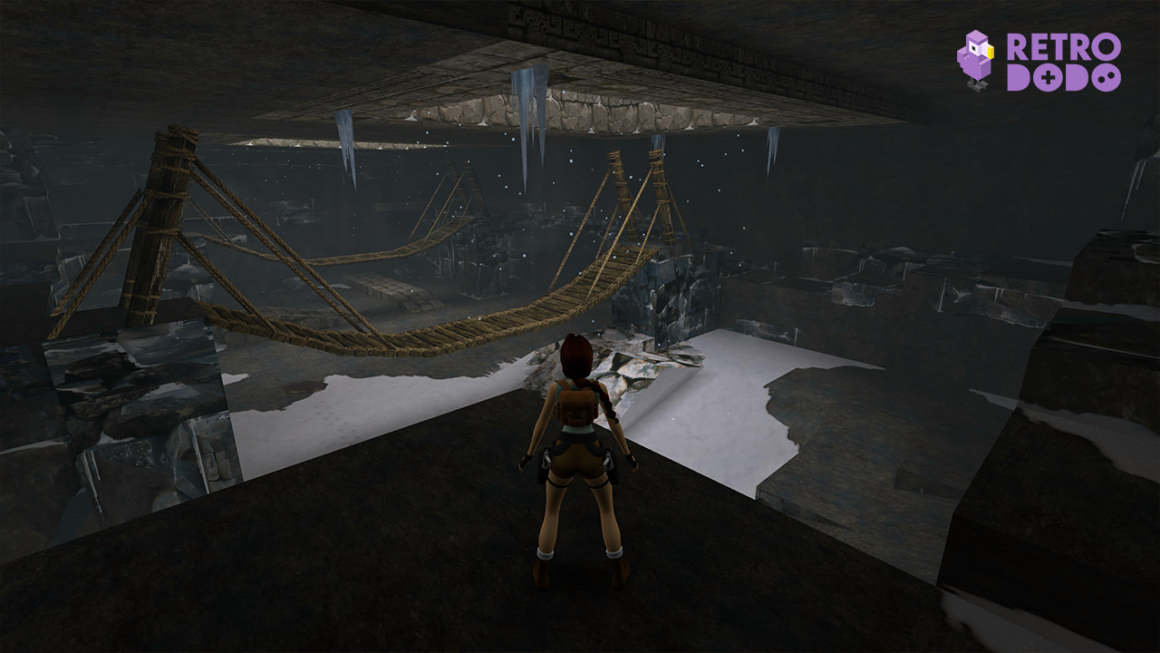
In terms of spectacle and what you’ll actually see while playing Tomb Raider I-III Remastered, each game has received meaningfully updated visuals that take advantage of modern hardware.
Revamped lighting gives Lara’s surroundings a more natural ambiance. Light shines into underground taverns through cracks and permeates through deep jungle vegetation, bathing the opening segment of Tomb Raider III in a warm orange hue.
While the new lighting is impressive, it makes traversing some of the more hidden areas of each game a chore. Baked in lighting previously allowed players to navigate their way through dank corners untouched by light but modern lighting makes dimly lit areas almost impossible to traverse or find items in.
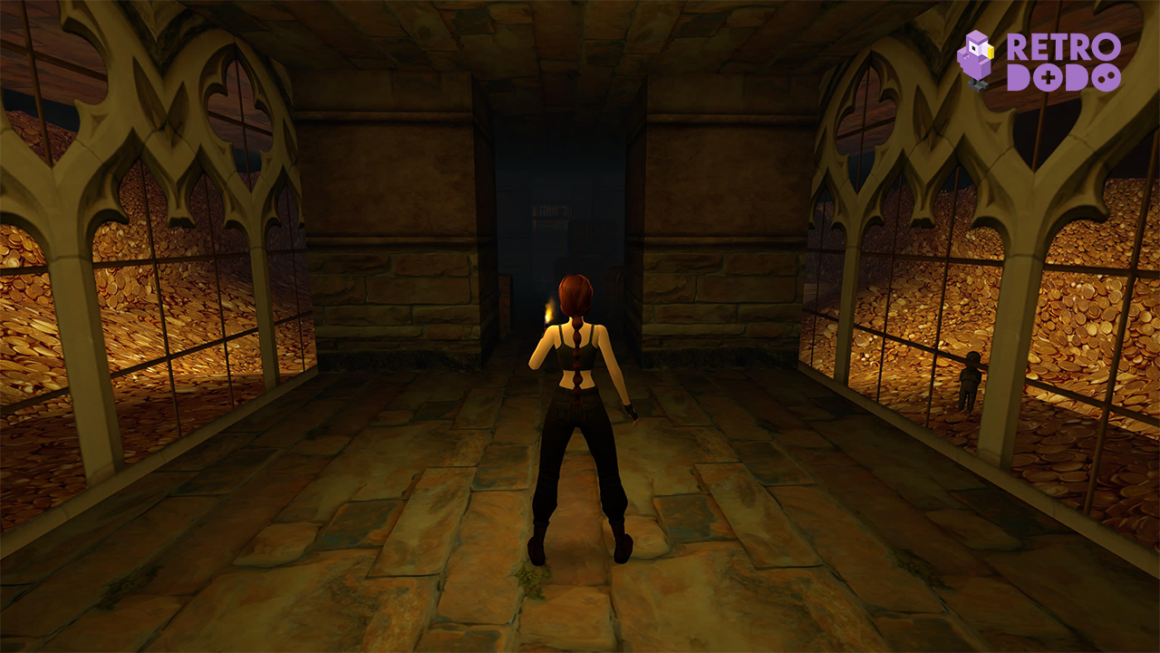
Players can swap to original graphics instantaneously with a single button press. Flitting between the two graphic modes highlights the efforts that Aspyr has made to provide more detailed textures throughout Lara’s adventures.
Every surface texture has been improved with intricate details added that faithfully replicate the look of the original games through a modern lens.
The only gripe I have in this overhaul is that climbable surfaces have received new parallax textures to give the impression of depth. These textures don’t sit well within the environment and tend to slide about when the camera, or indeed Lara, moves upon them, making them an unwelcome distraction.
The Old With The New
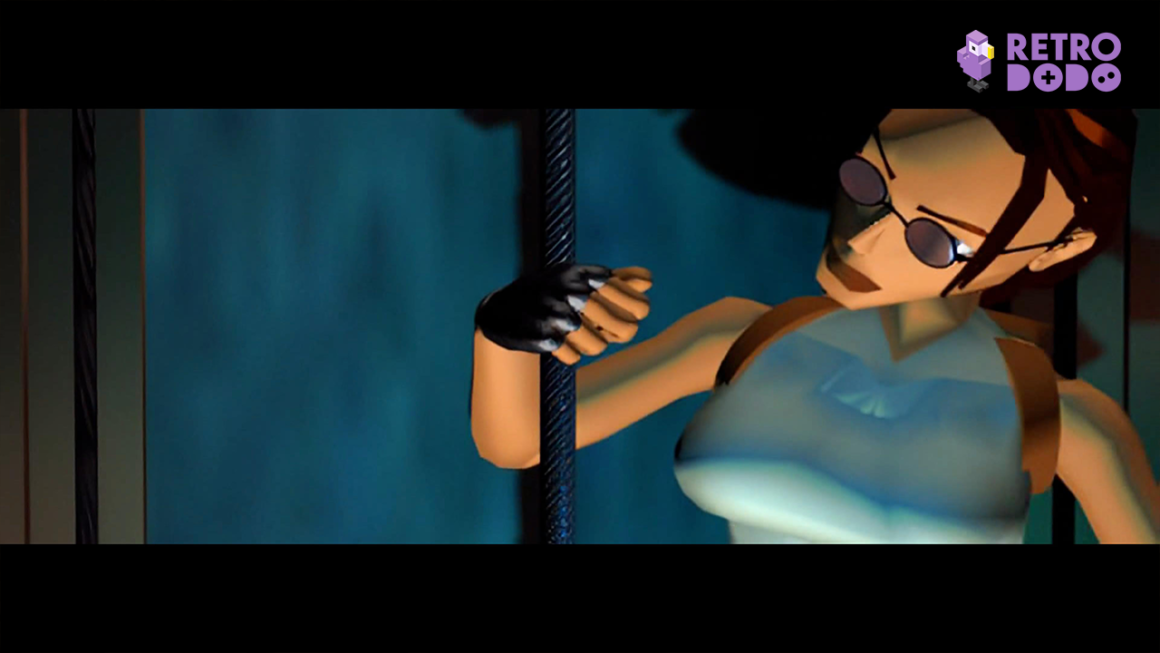
While iconic for introducing us to Lara Croft back in the 90s, the inclusion of AI-upscaled FMV sequences in this new collection feels jarring and at odds with the improved visuals elsewhere.
These videos are few and far between throughout the three games but not taking the time to do something more substantial than a basic upscaling feels like a missed opportunity to breathe more character into these story beats.
One area that Tomb Raider I-III Remastered does improve on adding more character though is the in-game cutscenes. The bobbing heads of the original are still there but now each character benefits from full facial animation that helps to bring each performance to life.
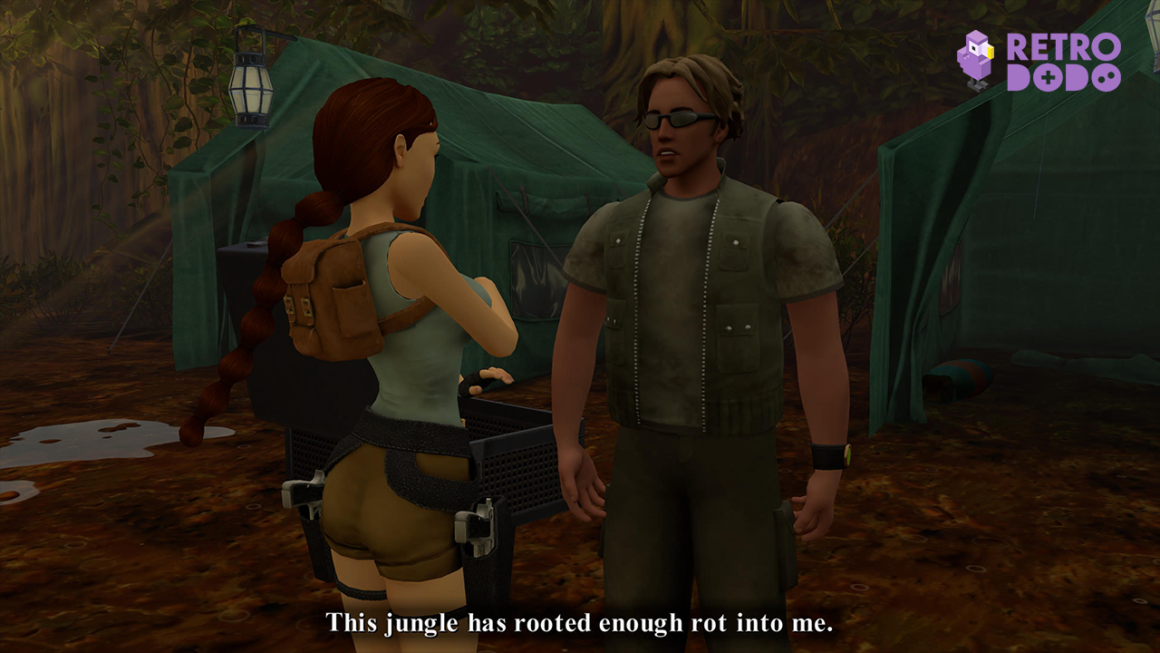
Tomb Raider I-III Remastered also boasts some quality-of-life improvements over its previous incarnations.
Console players are now given the ability to save their progress anywhere without the need to find a save crystal within each level. The system can be abused extensively to overcome difficult set pieces but it’s a welcome addition for players looking to make steady progress through the collection. Saving anywhere is a blessing and levels now load almost immediately thanks to speedy SSDs.
Another new feature is the ‘action indicator’. A nifty exclamation mark now appears whenever Lara can interact with an object, item, or switch in the game and removes some of the frustration found when not being perfectly positioned to interact with the world. The action indicators are on by default but purists can choose to disable them within the pause menu.
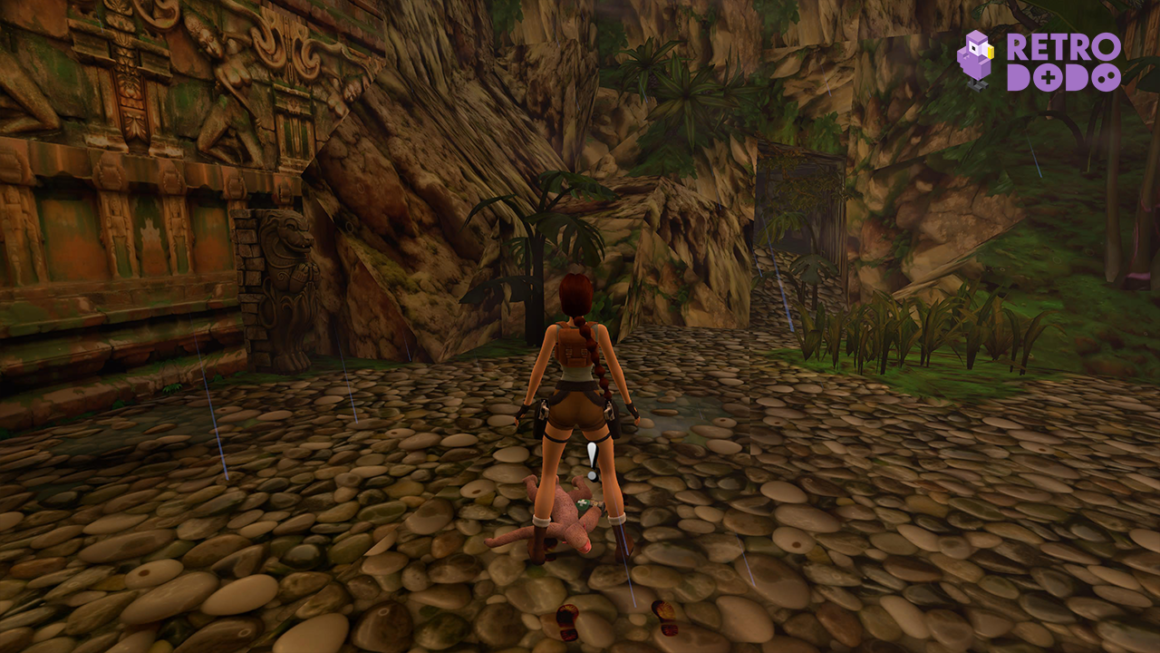
Controlling Ms. Croft
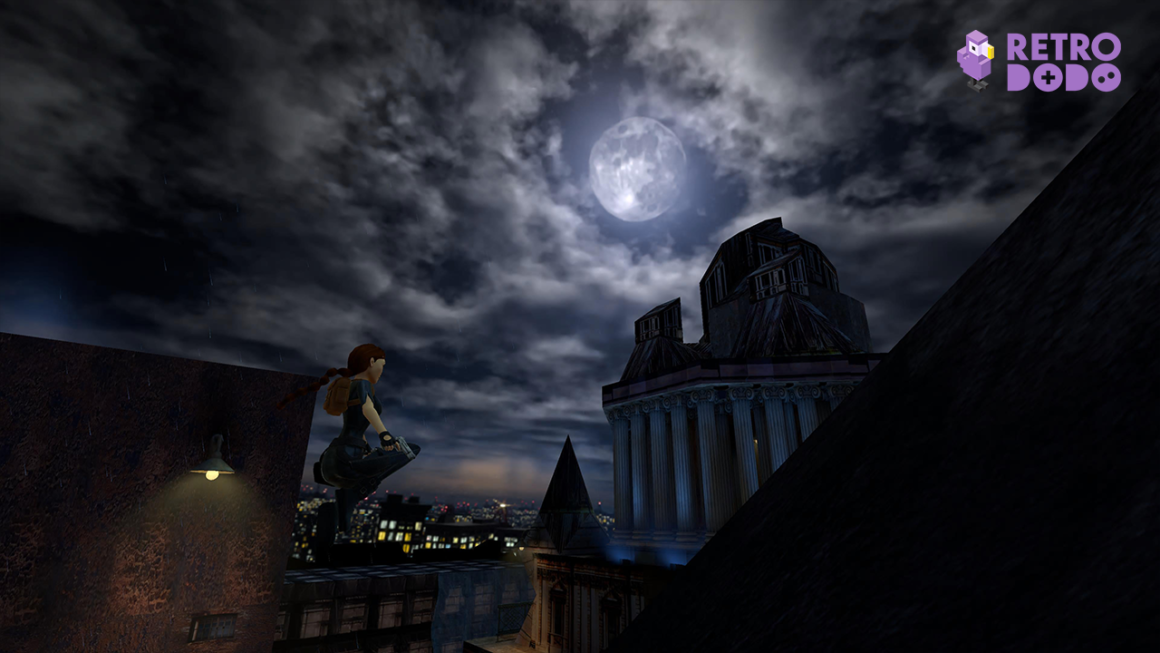
Perhaps the most divisive element of the original Tomb Raider games is the control system. Lara’s moveset fits perfectly within the grid system of the original games. The existing level designs were preserved to ensure Lara’s tank controls would still work within this remaster.
That will be good news to some. Lots of players will benefit from the muscle memory of slowly walking Lara to the edge of a jump, tapping backwards, running, jumping, and grabbing to make death-defying leaps.
However, for those unfamiliar with the nuances of the traversal system, the camera will often feel sluggish and Lara unresponsive as Ms. Croft only jumps when her running animation allows.
One concept that I subscribe to is that you never play as Lara Croft, you simply control her.
Modern Movement
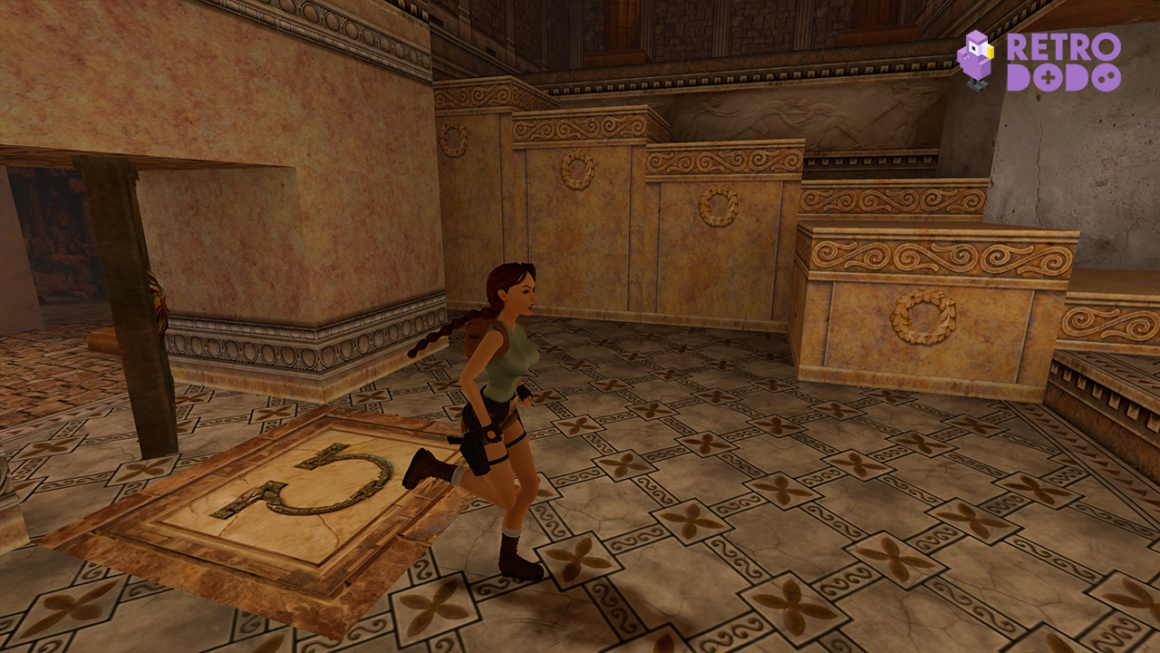
The much-touted modern control scheme does little to overcome any cumbersome movement. Unleashed from the game’s grid, Lara feels detached from the world. Any gains in responsiveness that allow for instant take-off the moment the jump button is pressed are offset by levels that aren’t designed for this level of freedom.
Even with Lara’s modern moveset, she still doesn’t handle quite like you’d expect. Her running animation alone, viewed with the untethered camera is strangely reminiscent of Robert Patrick in Terminator 2 is strange to witness in action. Detractors may lament that neither control scheme feels particularly natural to use.
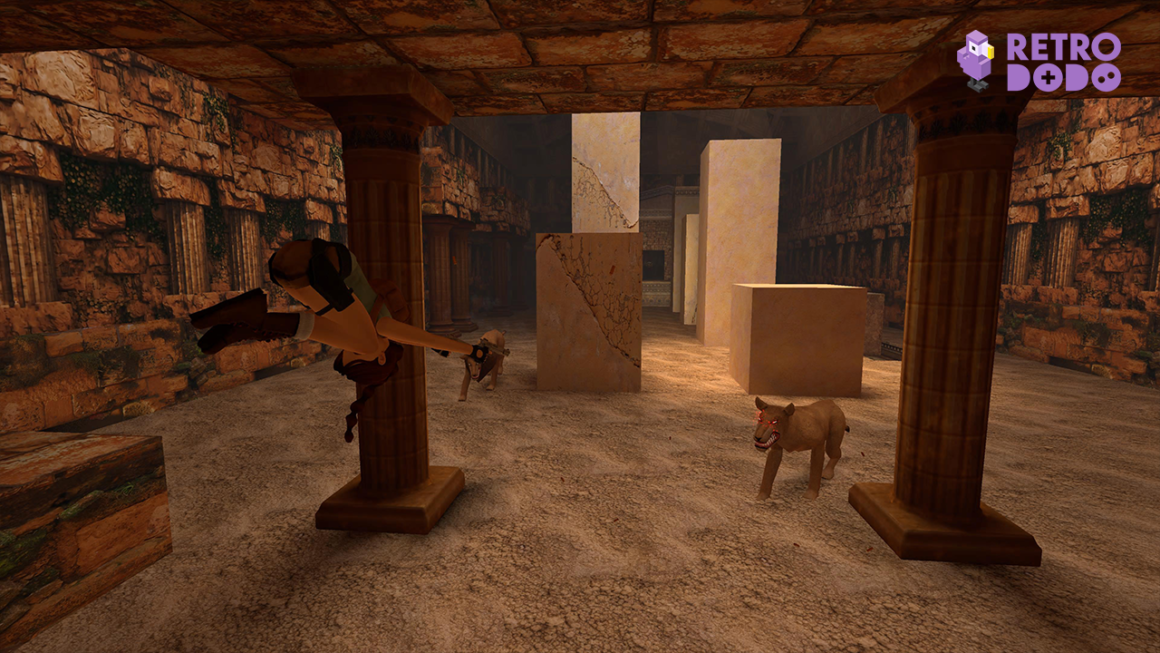
I’d argue that it’s unfair to compare Lara to Nathan Drake or even her more recent self from the reboot trilogy.
Moving Lara around each environment is a conundrum in itself. Understanding how Lara will move in relation to the camera position is part of the challenge. Knowing how Lara responds to your button presses is an ongoing puzzle that players solve throughout the entire runtime of the games.
Basic movement aside, Tomb Raider I-III Remastered fails to successfully onboard players with very little in the way of tutorials or gameplay assistance. It’s one thing to allow Lara to stay silent instead of blurting out the solution to a puzzle like protagonists in so many modern titles do, but it’s another thing entirely when there’s no on-screen guidance on how to get in and out of vehicles.
Platforming Performance
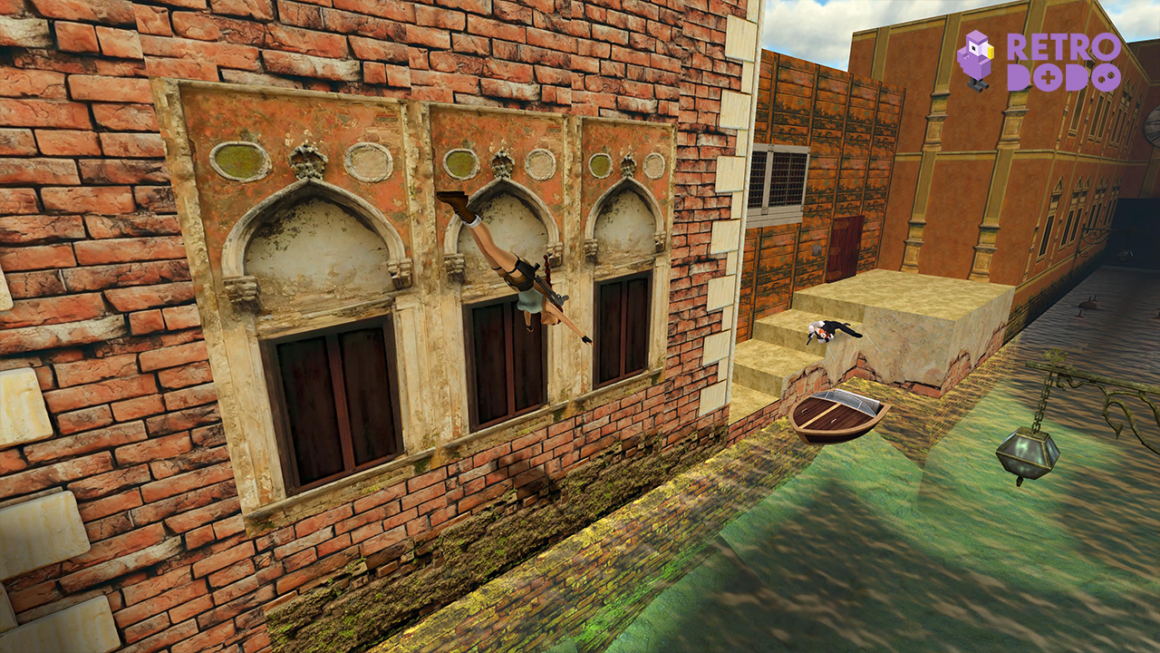
As you’d expect from remastered titles approaching their thirtieth anniversary, every game in the collection runs exceptionally well with the lick of paint applied.
Performance is locked at a rock solid 60fps at 4K resolution on PlayStation 5. Textures are detailed and crisp, character models are clean and fit beautifully into the world and the new water graphics are a huge step forward compared to their original counterparts.
We’ve not had the chance to test every available version but speaking to our friends and associates within the industry confirms that performance is universally great across all platforms, including 60fps at 1080p in docked mode on the Nintendo Switch.
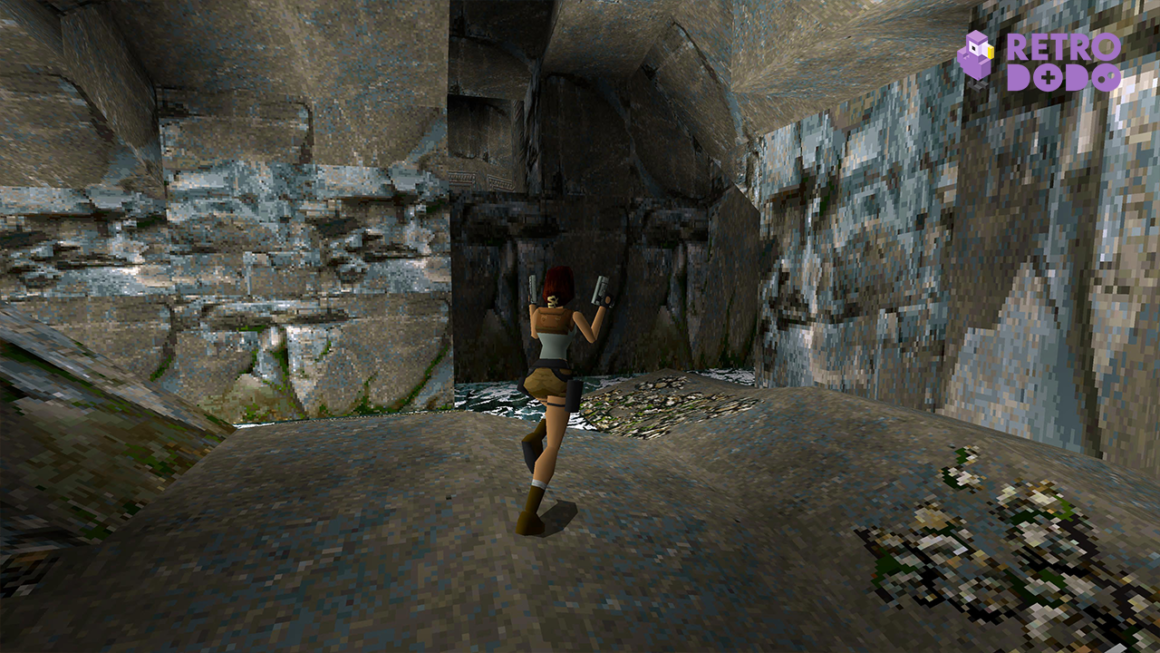
Swapping back to the original graphics mode, however, reveals a juddery 30fps performance complete with consistent frame pacing issues. It’s not a deal breaker by any stretch but it’s an issue that really shouldn’t be present in 2024.
There are a handful of other known issues that Aspyr is planning to patch shortly after launch. Again, these are minor issues, mainly centered around visual glitches and the new photo mode that won’t cause any major disruption to anyone’s enjoyment of the game.
Photo Shoot
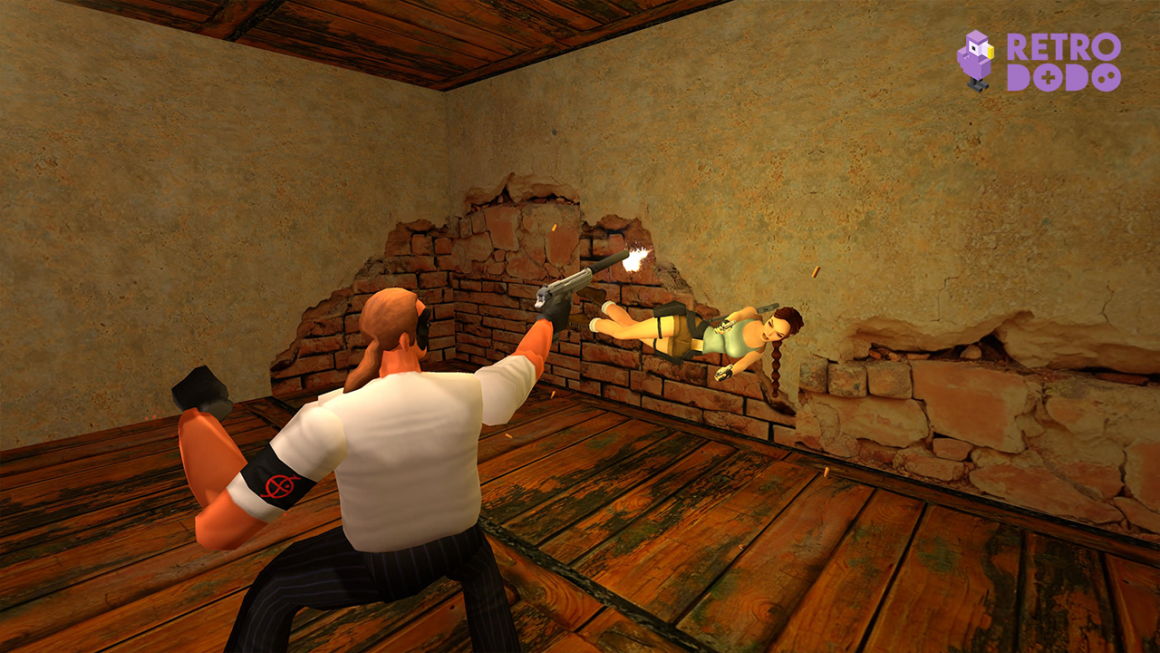
The aforementioned photo mode is a welcome inclusion in lots of modern titles. Being able to pause the action to capture a quick pic is something I quite enjoy, and I’m not the only one, as players fill digital photo albums and social feeds with snaps from their favourite games.
The photo mode in Tomb Raider I-III Remastered feels a tad basic. There are only two camera options available allowing control over depth of field and camera roll.
I still had plenty of fun setting up shots with Lara diving around guns blazing like she’s auditioning for John Woo and the ability to change outfits and facial expressions on the fly is also a nice touch.
The photo mode isn’t just to showcase the modern visuals though and players can switch back to the original graphics with a press of the button like anywhere else in the collection.
Consistent with the lack of guidance elsewhere, it took some fumbling of the controller to discover photo mode as the game doesn’t make its presence known at any point. For me, playing on PlayStation, discovering photo mode is activated by pressing in both sticks simultaneously made me feel like I’d solved another one of Tomb Raider’s fiendishly obscure puzzles.
Challenge Lara
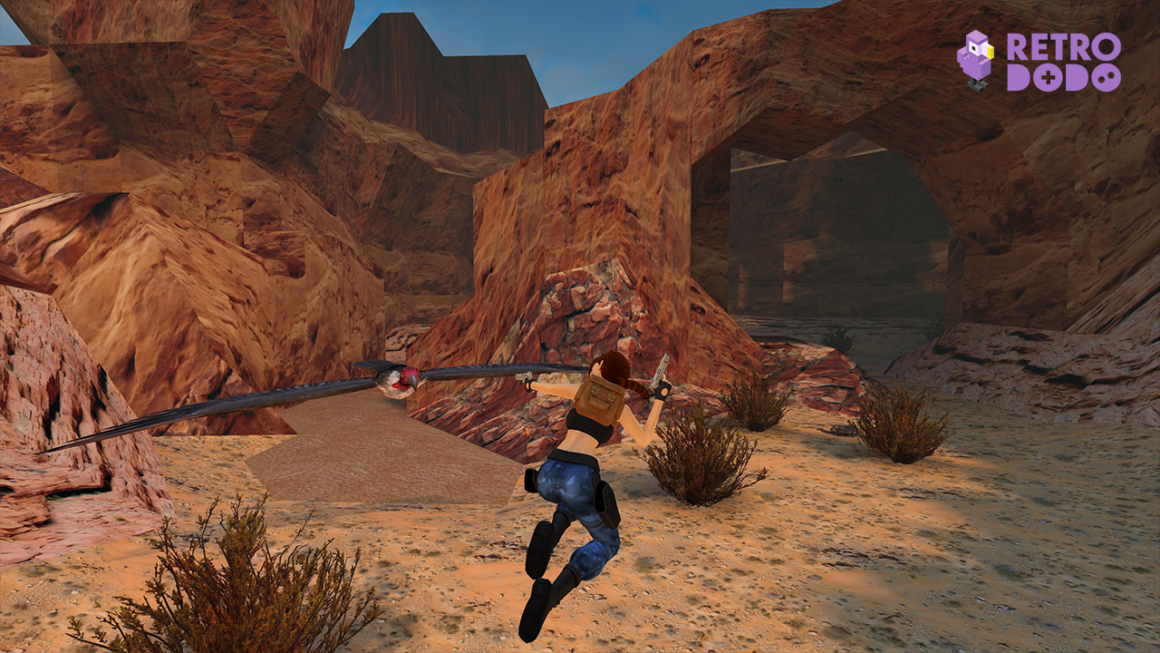
Lara’s first three adventures still present a great challenge for players old and new alike.
I’ve never been a big fan of the combat in these titles and the remaster does nothing to change my feelings on the subject. Cartwheeling through the air while holding the fire button as Lara locks onto the nearest threat is haphazard yet still the most effective way of dealing with oncoming threats.
Thankfully, traversal fares much better and tests your understanding of each zone. There’s no yellow paint to highlight critical paths or climbable ledges and progress through each level is the reward for thorough exploration, a curious mind, and mastery of Lara’s skills.
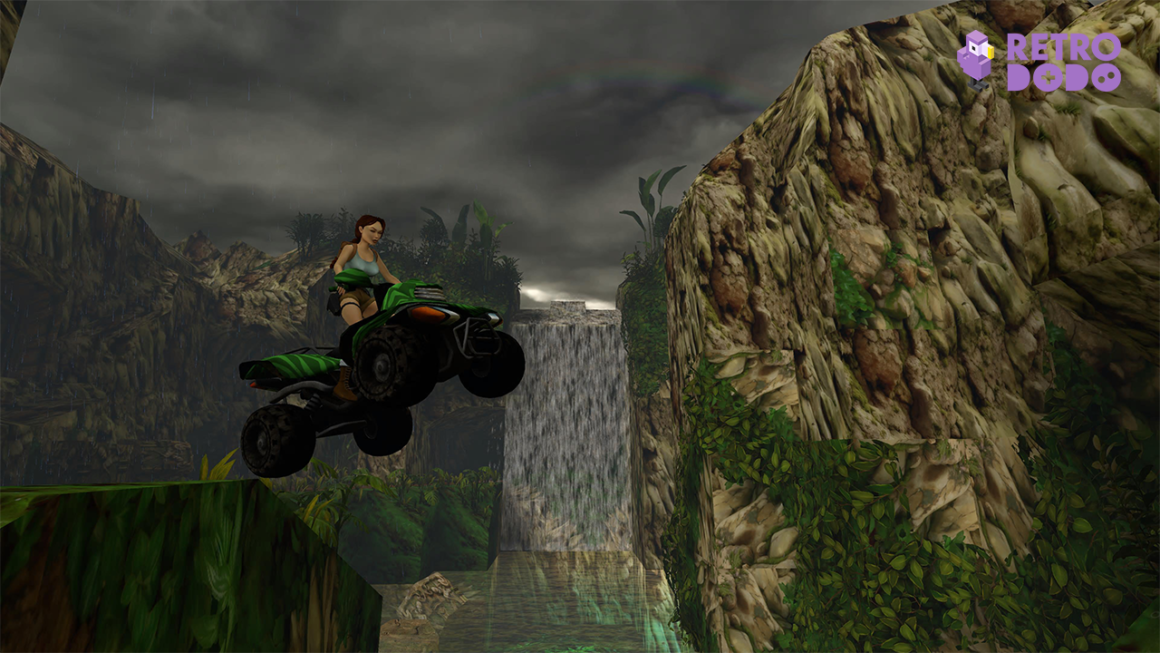
The puzzles found within each level are still the star of the show though and are worth the price of admission for their frequency and complexity.
Back in 1997, my uncle lent me his copy of Tomb Raider II when I was just ten years old and I vividly recall phoning him to help with the solution to the boat puzzle in the Venice level.
Of course, nowadays we have any number of websites offering us walkthroughs and step-by-step guides but I’d implore anyone picking up Tomb Raider I-III Remastered to sit and scratch their heads for a while before seeking assistance online or from a helpful uncle.
Overcoming these tests of mental gymnastics is an exciting and exhilarating experience, knowing that you’ve solved a logic puzzle in a world that has no issues placing the switch that opens your understairs cupboard in the middle of your elaborate garden maze.
To The Croft Manor Born
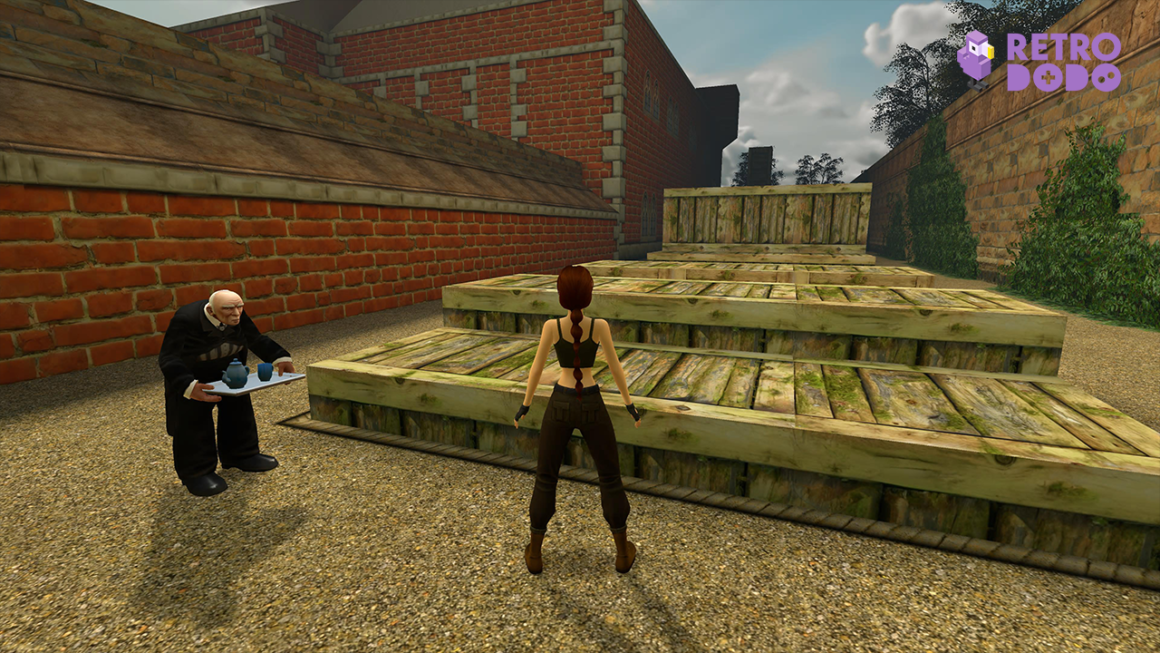
One of the highlights of the original Tomb Raider series was exploring Lara’s ‘humble abode’, the stately Croft Manor.
Lara’s homestead returns in this collection with everything you’d remember from their original versions including secrets to discover, time trials to take part in, and of course, a butler to endanger.
The sound of Winston’s rattling tea tray rushed me back to my childhood and it truly feels like a homecoming for the series to see Croft Manor revitalised within this remastered collection.
Lara’s assault courses are still frustratingly fiddly with no guidance on what you’re meant to do to complete them until after you fail and the scale of Lara’s belongings often make her and Winston appear like Borrower’s within the home, but there’s something so whimsically charming about this place that it’s still great to just poke around and explore.
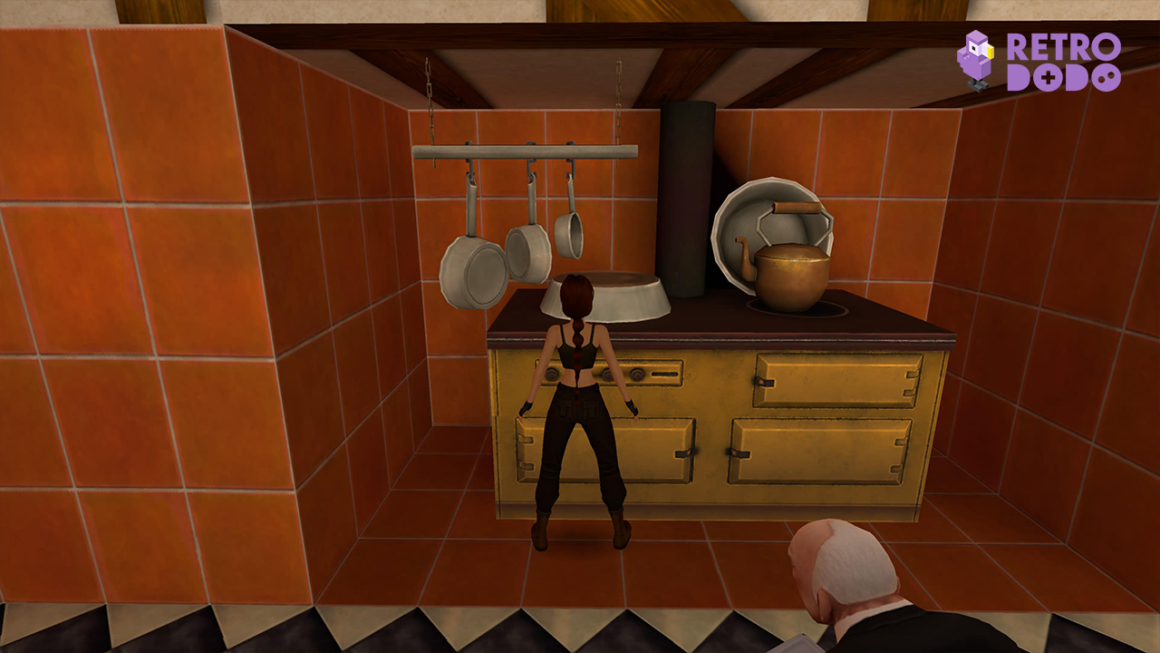
Final Thoughts
For less than twenty-five quid, players are getting three incredible titles that revisit the origins of one of gaming’s most iconic characters.
If you can overlook the lack of onboarding, the ropey FMV cutscenes, and occasionally frustrating controls, then there’s a mammoth amount of great content here that looks better than it ever has before.
Tomb Raider I-III Remastered is a pair of shoes you should happily wrestle on, even if it’s just to take a stroll down memory lane.



